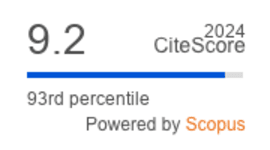Tackling Microbial Resistance and Emerging Pathogens with Next-Generation Antibiotics
DOI:
https://doi.org/10.36877/pmmb.a0000447Abstract
In the 19th century, the discovery of penicillin revolutionized medicine, saving millions from infectious diseases. People believed that they had won the war against infections. However, the misuse and abuse of antimicrobial agents are accompanied by major ramifications like antimicrobial resistance, creating drug-resistant superbugs. This issue is concerning worldwide, as dwindling effective antibiotics lead to rising healthcare costs, re-hospitalization, and disease severity. Consequently, multiple initiatives have been undertaken to address these phenomena, including the development of antimicrobials with novel modes of action. Without novel discoveries of newer antimicrobial agents, we may face the risk of entering a post-antibiotic era where uncomplicated infections become untreatable. Ultimately, the morbidity and mortality rate would rise higher than in the pre-antibiotic era. This study highlights the recent developments in antimicrobials over the past five years and explores the strategies employed by the new generation of drugs to act against resistance. For example, we discuss the treatment of Carbapenem-resistant Enterobacteriaceae, such as Klebsiella pneumoniae Carbapenamase-producing Gram-negative bacteria, by using meropenem-vaborbactam. Plazomicin, lacking a hydroxyl group, effectively combats metallo-beta-lactamase, which meropenem-vaborbactam is unable to address. It is also preferred over tobramycin and gentamicin due to its hydroxyethyl group. Furthermore, we explore the conjugation of nanoparticles with antibiotics, which demonstrated synergistic effects and positive outcomes on different bacterial resistance. Mechanisms include increased drug adhesion to bacterial cell walls, generating oxidative stress, and causing mistranslation by detaching ribosomes from tRNA. Additionally, the IspH inhibitors like 4’-flurouridine targeting the MEP pathway which is also included in the discussion. This report thoroughly examines newer generations and classes of antibiotics, highlighting the improvements made by scientists to combat bacterial resistance effectively.
Downloads
Published
How to Cite
Issue
Section
License
Copyright (c) 2024 Kar Jing Chong, Huang Feng, Vengadesh Letchumanan, Masita Arip, Omotayo Fatokun, Lazuardi Mochamad, Chin Tat Ng, Sasikala Chinnapan, Malarvili Selvaraja

This work is licensed under a Creative Commons Attribution-NonCommercial 4.0 International License.
Author(s) shall retain the copyright of their work and grant the Journal/Publisher right for the first publication with the work simultaneously licensed under:
Creative Commons Attribution-NonCommercial 4.0 International (CC BY-NC 4.0). This license allows for the copying, distribution and transmission of the work, provided the correct attribution of the original creator is stated. Adaptation and remixing are also permitted.

This broad license intends to facilitate free access to, as well as the unrestricted reuse of, original works of all types for non-commercial purposes.
The author(s) permits HH Publisher to publish this article that has not been submitted elsewhere.



.png)

.jpg)
